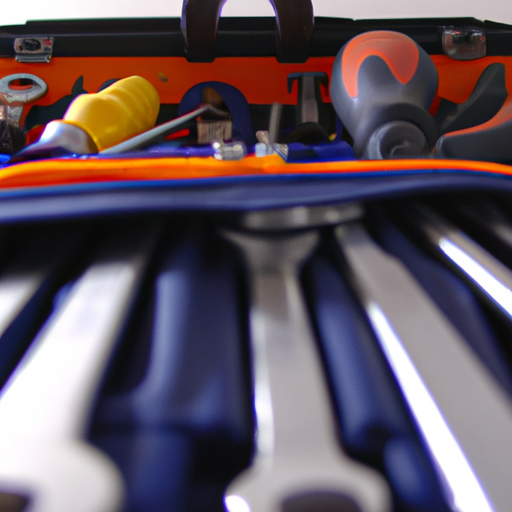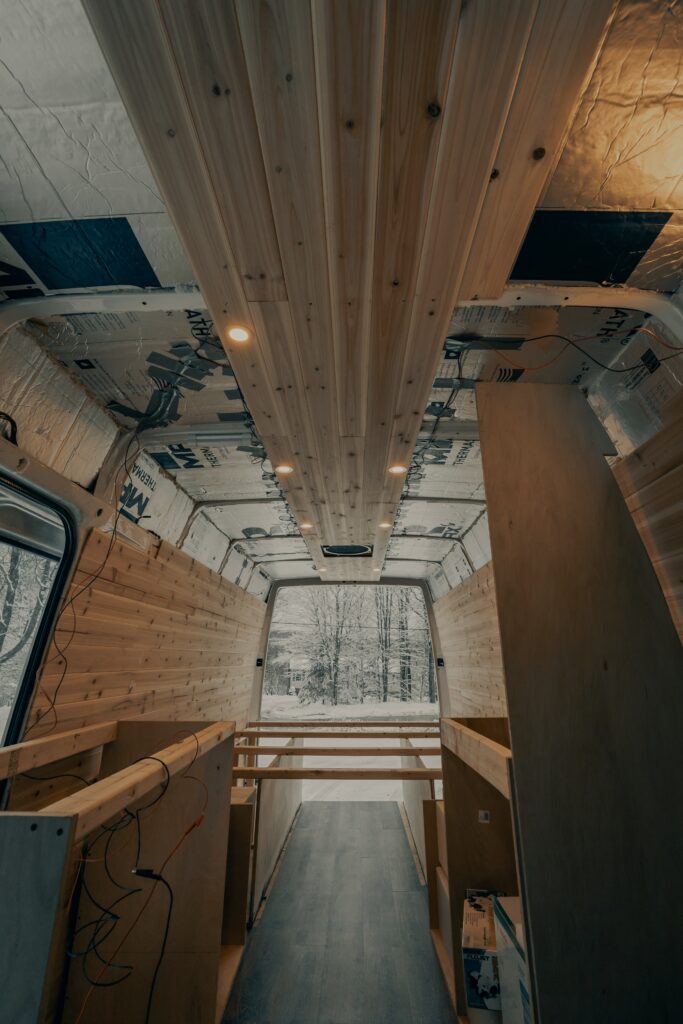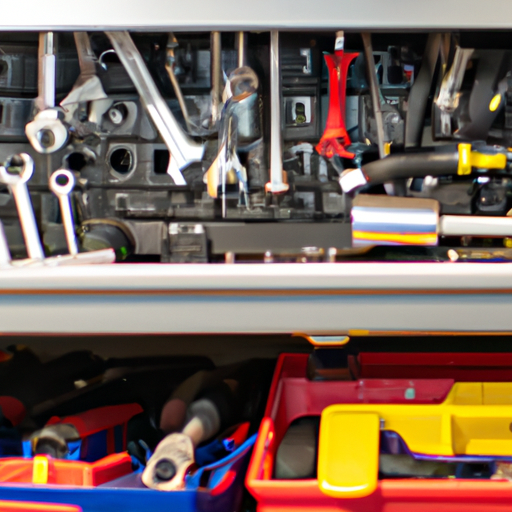
So, you’ve finally decided to tackle the task of installing a hoist system yourself. You’re probably wondering if you have what it takes to handle such a project. Well, rest assured, my friend, because in this article, we’re going to explore whether it’s possible for you to successfully install a hoist system on your own. We’ll break down the crucial factors to consider, provide you with some expert advice, and equip you with the confidence and knowledge you need to take on this exciting challenge. So, grab your tools and let’s get started!

Understanding Hoist Systems
hoist systems are mechanical devices used to lift and lower heavy objects. They are an essential tool in various industries, including construction, manufacturing, and logistics. A hoist typically consists of a motor, cables or chains, and a hook or other attachment mechanism. It operates by using a combination of mechanical force and pulleys to lift objects vertically. Understanding the different aspects of hoist systems is crucial for a successful installation.
Definition of a hoist
A hoist can be defined as a device that is used to lift heavy objects by utilizing mechanical force. It is typically operated using electrical or hydraulic power, although manual hoists are also available. The primary purpose of a hoist is to simplify lifting tasks and reduce the risk of injury or strain on individuals involved in the process. Hoists are designed to be sturdy and reliable, allowing for efficient and safe lifting operations.
Types of hoist systems
There are various types of hoist systems available, each designed for specific applications and lifting requirements. Some common types include electric hoists, manual hoists, chain hoists, wire rope hoists, and pneumatic hoists. electric hoists are popular for their ease of use and power, while manual hoists are suitable for lighter loads and situations where electricity may not be available. Chain hoists utilize a chain for lifting, whereas wire rope hoists use wire ropes. Pneumatic hoists, on the other hand, are powered by compressed air. Understanding the different types of hoist systems will help you choose the most appropriate one for your needs.
Uses of hoist systems
Hoist systems have a wide range of uses across various industries. In construction, they are commonly used for lifting heavy materials such as steel beams, concrete blocks, and machinery. In manufacturing, hoists are essential for moving heavy equipment, parts, and finished products within a facility. Warehouse and logistics operations rely on hoists to efficiently move and store large and heavy items. Additionally, hoist systems are also utilized in shipyards, mining operations, and automotive repair shops. The versatility of hoist systems makes them a valuable asset in numerous industries.
Basic Tools Needed for Hoist Installation
Before undertaking any hoist installation, it is essential to gather the necessary tools and equipment. This ensures that the installation process proceeds smoothly and effectively. While specific hoist installations may require additional materials and tools, there are several basic tools that are universally needed.
Screwdrivers and wrenches
screwdrivers and wrenches are two of the most commonly used tools in hoist installation. They are used to tighten bolts, screws, and other fasteners, ensuring that the hoist is securely assembled. It is recommended to have a variety of screwdrivers and wrenches in different sizes to accommodate different fasteners.
A hod or bucket
A hod or bucket is required to hold small parts, such as screws and bolts, during the installation process. This prevents the loss of small components and keeps them organized, making the installation process more efficient.
A ladder and safety equipment
A sturdy ladder is essential for reaching elevated areas during the installation. It is crucial to choose a ladder that is appropriate for the height requirements of the installation and ensure it is stable and secure. Additionally, safety equipment such as gloves, safety glasses, and a hard hat should be worn to protect against potential hazards.
Additional materials and tools required for specific hoist types
Depending on the type of hoist system being installed, additional tools and materials may be required. For example, electric hoist installations may require electrical wiring and switches, while wire rope hoist installations may need wire rope clips and thimbles. It is important to consult the manufacturer’s instructions and ensure that you have all the necessary tools and materials before beginning the installation process.
Preparation Before Installation
Proper preparation is key to a successful hoist installation. Taking the time to plan and prepare ensures that the installation process goes smoothly and reduces the risk of accidents or errors.
Choosing the correct location
Selecting the appropriate location for the hoist system is crucial. The chosen location should have sufficient space to accommodate the hoist, allow for safe operation, and provide convenient access to the objects being lifted. Consider factors such as weight capacity, overhead clearance, and structural integrity when choosing the installation site.
Ensuring safe handling procedures
Hoist systems are heavy and can cause serious injury if mishandled. Before installation, it is important to ensure that proper lifting and handling procedures are followed. This includes using lifting equipment such as forklifts or cranes to move heavy components, ensuring a stable base for the hoist, and employing proper lifting techniques to minimize strain on the body.
Assembling required tools and materials
Before beginning the installation, gather all the necessary tools and materials as specified by the manufacturer’s instructions. This includes the hoist system components, fasteners, and any additional materials required for the specific hoist type. Having everything readily available will streamline the installation process and prevent delays or interruptions.
Step-by-Step Installation Process
Once you have completed the necessary preparations, it is time to proceed with the hoist installation. Following a step-by-step process ensures that each component is installed correctly and that the hoist system is securely anchored.
Attaching the hoist to a suitable structure
The first step is to securely attach the hoist to a suitable structure, such as a beam or frame. Carefully follow the manufacturer’s instructions to ensure proper installation. Use appropriate fasteners and ensure that they are tightened securely to prevent any movement or instability.
Putting together the hoist components
Next, assemble the various components of the hoist system as outlined in the manufacturer’s instructions. This may involve connecting cables or chains, attaching pulleys or sheaves, and securing the control mechanism. Pay close attention to the assembly process to ensure that each component is correctly aligned and functioning properly.
Ensuring correct alignment and anchoring
During the installation process, it is important to regularly check the alignment of the hoist and ensure that it is correctly positioned. Improper alignment can lead to operational issues and potential safety hazards. Additionally, ensure that the hoist system is properly anchored to prevent any movement or dislodging during use.
Running initial checks
After installing the hoist system, perform a series of initial checks to verify its functionality. This may include testing the lifting and lowering capabilities, checking for any unusual noises or vibrations, and inspecting the control mechanisms. Address any issues or inconsistencies before proceeding to ensure the hoist system is operating reliably.

Safety Measures During Installation
Hoist installation involves inherent risks, and it is crucial to prioritize safety throughout the process. Adhering to safety measures reduces the likelihood of accidents, injuries, and equipment damage.
Using appropriate personal protective equipment (PPE)
Wearing suitable personal protective equipment (PPE) is essential during hoist installation. This includes gloves, safety glasses, and a hard hat to protect against hazards such as falling objects, sharp edges, and electrical shock. Additionally, consider using ear protection if the installation area is noisy.
Following manufacturer’s instructions exactly
The manufacturer’s instructions provide important guidance on the proper installation and operation of the hoist system. It is vital to follow these instructions precisely to ensure safe installation and optimal performance. Deviating from the instructions may compromise safety and result in equipment malfunction or failure.
Ensuring proper lifting and handling procedures
Throughout the installation process, it is crucial to adhere to proper lifting and handling procedures. This includes using lifting equipment when required, seeking assistance for heavy components, and maintaining proper posture and body mechanics. Failure to follow correct lifting procedures can lead to injuries, strains, or accidents.
Troubleshooting Common Installation Problems
During hoist installation, you may encounter some common problems that require troubleshooting. Understanding these issues and how to address them ensures a smooth installation process and optimal performance of the hoist system.
Difficulty in attaching the hoist
If you encounter difficulties in attaching the hoist to the structure, double-check that the chosen location is suitable and can support the weight of the hoist and the objects being lifted. Consider consulting with a structural engineer to ensure the integrity of the structure. In some cases, alternative installation methods or additional support may be necessary.
Malfunctioning of the hoist system
If the hoist system malfunctions during installation, carefully review the manufacturer’s instructions to identify potential causes. Check for any loose connections, damaged components, or misaligned parts. Address any issues promptly and consult the manufacturer’s technical support if necessary.
Incorrect alignment
Misalignment of the hoist components can result in poor performance or even failure of the system. If you suspect misalignment, carefully inspect each component, paying close attention to the cables or chains, pulleys, and hooks. Adjust as necessary to ensure proper alignment and functionality.

Post Installation Checks
After completing the hoist installation, it is essential to conduct a series of post-installation checks to verify its performance and address any potential issues.
Performing an initial dry run
Before using the hoist system for its intended purpose, perform an initial dry run. This involves testing the hoist’s lifting and lowering capabilities without any load attached. Pay attention to any unusual noises, vibrations, or operational issues. If any issues arise, address them promptly before proceeding further.
Checking for any abnormalities or malfunction
Inspect the hoist system for any abnormalities or signs of malfunction. This includes checking the cables or chains for any signs of wear or damage, ensuring proper alignment of all components, and verifying the functionality of the control mechanisms. Make any necessary adjustments or repairs to maintain optimal performance.
Hiring a professional for final inspection if necessary
For peace of mind and to ensure the installation was carried out correctly, it may be prudent to hire a professional for a final inspection. A professional inspection can identify any potential issues that may have been overlooked and provide expert advice on any necessary adjustments or improvements.
Regular Maintenance of Hoist System
Regular maintenance is crucial to prolonging the lifespan of the hoist system and ensuring its continued safe operation. By implementing a routine maintenance schedule, you can address potential wear and tear or identify any problems before they escalate.
Scheduling regular inspections
Regular inspections should be scheduled to identify any signs of wear, damage, or potential breakages. Inspect cables or chains for signs of fraying or corrosion, check fasteners for tightness, and inspect control mechanisms for smooth operation. Address any issues promptly to prevent further damage or accidents.
Addressing wear and tear or potential breakages
Over time, hoist systems may experience wear and tear due to constant use. It is important to regularly check for any signs of damage or degradation and promptly address them. This may involve replacing worn cables or chains, lubricating moving parts, or repairing any malfunctioning components. Consulting the manufacturer’s maintenance guidelines is crucial to ensure proper maintenance procedures.
Knowing when to contact professionals for regular servicing
While regular maintenance can be carried out by individuals familiar with the hoist system, there may be instances where professional servicing is necessary. Professional servicing ensures a thorough inspection and maintenance, offering an expert perspective and identifying any potential issues that may be missed by non-professionals. It is recommended to follow the manufacturer’s guidelines for regular servicing intervals and to engage trusted professionals for this task.

When to Call a Professional
While some individuals may opt for DIY hoist installation, there are scenarios where it is advisable to call a professional to carry out the installation or handle repairs.
Identifying signs of serious issues
If you notice any signs of serious issues during installation, such as structural concerns, electrical complications, or complex installation requirements, it is best to call a professional. They have the necessary expertise and experience to address these areas effectively, ensuring the hoist system is installed safely and optimally.
Understanding risks associated with DIY repair
Attempting to repair a hoist system without proper knowledge and training can lead to accidents, equipment damage, or further issues. DIY repair may void warranties and compromise the safety and functionality of the hoist system. It is essential to understand the risks associated with DIY repair and seek professional assistance when necessary.
Selecting trusted professionals and services
When choosing to call a professional, it is important to select trusted individuals or companies with relevant experience and qualifications. Seek recommendations, check reviews, and verify credentials to ensure that you are engaging reputable professionals who can deliver high-quality installation or repair services.
Conclusion: Is DIY Installation Right for You?
The decision to undertake a DIY hoist installation ultimately depends on several factors, including personal skillset, comfort with installation tasks, and the complexity of the specific installation. While DIY installation can be a cost-effective option, it is essential to consider the challenges and benefits.
Summary of challenges and benefits of self-installation
Self-installation of a hoist system presents the challenge of ensuring proper assembly, alignment, and anchoring. It requires acquiring the necessary tools, following manufacturer’s instructions meticulously, and maintaining safety protocols. However, self-installation offers the benefit of a potentially cost-saving solution, the convenience of completing the installation on your own timeline, and the satisfaction of successfully completing a hands-on project.
Personal skillset and comfort with installation
Before embarking on a DIY installation, honestly assess your personal skillset and comfort level with installation tasks. Are you familiar with basic hand tools and construction principles? Do you have experience with similar installations or mechanical systems? If you feel confident in your abilities and have the necessary knowledge, DIY installation may be a viable option.
Important reminders about safety and professional advice
Regardless of the chosen installation method, prioritizing safety is paramount. Always wear appropriate personal protective equipment, closely follow manufacturer’s instructions, and ensure proper lifting and handling procedures are followed. Additionally, seek professional advice whenever in doubt or when encountering complex installation scenarios. Professionals can provide guidance, troubleshoot issues, and offer peace of mind that the hoist system is installed correctly and safely.
In conclusion, the installation of a hoist system can be a complex task, requiring careful planning, preparation, and attention to detail. By understanding the different aspects of hoist systems, gathering the necessary tools, following a step-by-step installation process, and adhering to safety measures, you can successfully install a hoist system yourself. However, it is important to evaluate personal skillset, consider the benefits and challenges of self-installation, and know when to seek professional assistance. Balancing safety, expertise, and cost-effectiveness is paramount to ensure a successful hoist installation.










